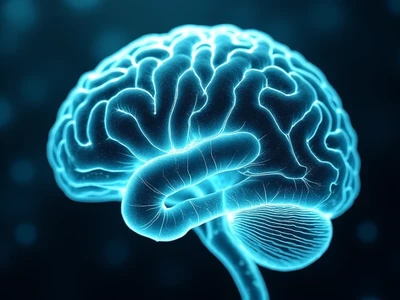Understanding Angle of Depression and Its Impact

The term “”angle of depression“” might initially bring to mind complex mathematical calculations, but understanding its core concept is simpler than you might think. It’s a fundamental idea in trigonometry with practical applications in various fields like navigation, surveying, and even astronomy. Grasping this concept helps us measure and understand the world around us from different perspectives, much like understanding our internal world requires looking at things from different angles.
Definition of Angle of Depression
So, what exactly is the definition of angle of depression? Imagine you are standing on top of a tall cliff or building, looking down at an object below, perhaps a boat on the water or a car on the street. First, picture a perfectly horizontal line extending straight out from your eyes, parallel to the ground. The angle of depression is the angle formed between this horizontal line and your line of sight as you look down towards the object.
It’s essentially the angle by which your gaze deviates downwards from the horizontal. This angle is always measured from the horizontal line down to the object. For instance, if you’re an airplane pilot looking down at the runway during descent, the angle between the horizontal flight path and the line of sight to the runway is the angle of depression. It helps in calculating distances and heights accurately.

Understanding this angle is crucial in real-world scenarios. Surveyors use it to determine the height of structures or the depth of valleys. Architects might consider it when designing buildings with specific viewing angles. Even in everyday life, subconsciously, we estimate these angles when judging distances or heights from an elevated position, demonstrating the intuitive nature of this geometric concept.
Angle of Depression vs. Angle of Elevation
Now, let’s discuss the angle of depression angle of elevation relationship. While the angle of depression involves looking downwards from a horizontal line, the angle of elevation is its counterpart. The angle of elevation is formed when an observer looks upwards from a horizontal line to an object situated above them. Think about standing on the ground and looking up at the top of that same cliff or building.
The fascinating relationship between the angle of elevation angle of depression lies in geometry. If you consider the observer on the cliff (Observer A) looking down at the boat (Object B), and someone on the boat (Observer B) looking up at the person on the cliff (Object A), their lines of sight form parallel lines with the horizontal planes at each level. Because of alternate interior angles formed by a transversal line (the line of sight) intersecting two parallel lines (the horizontals), the angle of depression from Observer A to Object B is equal to the angle of elevation from Observer B to Object A.
This symmetry is incredibly useful. It means that whether you’re measuring the angle looking down from a height or looking up from below, the magnitude of the angle remains the same, provided the horizontal lines are parallel. This principle simplifies calculations in navigation and surveying, allowing for flexibility in measurement points without changing the fundamental angular value. It connects the perspectives of looking down and looking up into a single geometric framework.

Root Causes of Depression: A Symptom-Based Approach
While the term “”angle of depression”” describes a physical perspective, many people experience a profound emotional and psychological state often referred to simply as depression. At BrainTalking, we emphasize that understanding this condition requires looking beyond the surface. It’s crucial to recognize that psychological depression is often a symptom, not the disease itself. It signals that something deeper within our physical or emotional well-being is out of balance.
Identifying Depression as a Symptom
Treating depression solely as a disease can be misleading and sometimes counterproductive. When we view depression as a symptom, it encourages us to investigate the underlying causes rather than just masking the feeling. Unfortunately, conventional approaches often focus on treating the symptom directly, frequently with medications that can carry significant side effects, without fully addressing the root issue.
Realizing that depression is a signal allows for a more holistic and effective approach. The best strategy involves matching the remedy or solution to the specific underlying cause. Just as a fever signals an infection, depression signals deeper imbalances that need attention. Ignoring these root causes means the problem may persist or manifest in other ways, even if the immediate feeling of depression is temporarily alleviated.
Key Underlying Causes of Depression
Depression doesn’t stem from a single source; it can arise from a multitude of factors, often interacting with each other. Identifying these potential triggers is the first step toward finding lasting relief. Understanding these causes helps tailor interventions that address the specific needs of the individual, leading to more sustainable well-being.
One common trigger is the profound grief following the loss of a loved one. This is a natural human response, but prolonged or complicated grief can evolve into clinical depression, requiring support and time for healing. The emotional weight of loss can significantly impact mood and daily functioning, making compassionate understanding essential during this period.
Another major contributor is stress. The relentless pressures of modern life, financial worries, job instability, or relationship problems can overwhelm our coping mechanisms. Chronic stress elevates cortisol levels, which can negatively impact brain chemistry, including serotonin regulation, potentially leading to depressive symptoms. Effective stress management techniques are therefore vital for mental health maintenance.
Seasonal changes, particularly the reduced sunlight during winter months, can trigger Seasonal Affective Disorder (SAD), a type of depression. This isn’t just about missing the sun; it’s linked to disruptions in circadian rhythms and reduced production of Vitamin D and serotonin. Lack of sunlight directly impacts crucial mood-regulating hormones and neurotransmitters in the brain.

Postpartum depression affects many women after childbirth. While hormonal shifts, like a decrease in estrogen, play a role, it’s often compounded by significant nutritional deficiencies. Carrying, delivering, and potentially breastfeeding a baby depletes the mother’s stores of essential nutrients like iron, zinc, and magnesium. Replenishing these micronutrients is critical for restoring mood and energy levels postpartum.
The gut-brain axis is increasingly recognized for its role in mental health. Gut dysbiosis, an imbalance in the gut microbiome often caused by factors like antibiotic use, poor diet, or chronic stress, can severely impact mood. Since a large percentage of serotonin is produced in the gut, disruptions here can inhibit your ability to maintain a positive emotional state. Restoring gut health is often a key component in addressing depression.
Lack of quality sleep is profoundly linked to depression. It’s difficult to find someone who is chronically sleep-deprived yet full of energy and emotionally resilient. Sleep deprivation impacts cognitive function, emotional regulation, and hormonal balance, creating a state of exhaustion that can easily spiral into depression. Prioritizing restorative sleep is fundamental for mental well-being.
Finally, blood sugar imbalances can significantly affect mood. Both hypoglycemia (low blood sugar) and hyperglycemia (high blood sugar), often associated with dietary habits or conditions like diabetes, can lead to irritability, fatigue, anxiety, and a lowered mood state that resembles or contributes to depression. Stabilizing blood sugar through diet and lifestyle is crucial for emotional stability.
Effective Solutions and Remedies for Depression
Understanding that depression is often a symptom pointing to underlying issues allows us to explore targeted, natural solutions. Instead of solely relying on symptom management, we can address the root causes, leading to more profound and lasting improvements in mood and overall well-being. Many powerful strategies leverage the body’s natural healing mechanisms.
Sunlight and Bright Light Therapy
One of the most potent and accessible remedies is sunlight. Exposure to natural light offers numerous benefits beyond just feeling good. Sunlight provides a full spectrum of visible and invisible light, including UV and infrared, which have therapeutic effects. It helps regulate the body’s internal clock, improves sleep by boosting melatonin reserves later in the evening, and directly stimulates the production of Vitamin D.
Vitamin D itself is crucial for mental health, acting almost like a hormone in the brain. Studies consistently link low Vitamin D levels to higher rates of depression. However, achieving therapeutic levels often requires more than minimal exposure or low-dose supplements. While some studies using low doses (400-800 IU) found limited effects, clinical experience suggests higher doses, potentially 4,000 IU, 5,000 IU, 10,000 IU, or even 20,000 IU daily (under guidance), might be needed to correct deficiencies and significantly impact mood, especially considering factors that inhibit absorption. Always consult a healthcare professional before starting high-dose supplementation.
Furthermore, sunlight entering the eyes stimulates the retina, which connects directly to brain centers responsible for serotonin production. More sunlight exposure can naturally increase serotonin levels, enhancing mood. If natural sunlight is scarce, such as during winter or due to lifestyle constraints, bright light therapy is an excellent alternative. Using a full-spectrum lamp providing 10,000 Lux for about 30 minutes in the morning can effectively mimic sunlight’s benefits, significantly improving mood and energy levels for many individuals, particularly those with SAD. Remember that stress (high cortisol) down-regulates serotonin, so managing stress is also key.
Dietary and Lifestyle Interventions
Beyond light exposure, specific dietary and lifestyle changes can profoundly impact mood. Fasting, particularly intermittent or periodic fasting, has shown remarkable effects on brain health and mood. Fasting triggers cellular repair processes (autophagy) in the brain, can enhance cognitive function, and elevates mood through various biochemical pathways. While the idea might seem counterintuitive, reducing food intake for controlled periods can reset brain chemistry and alleviate depressive symptoms, as evidenced by anecdotal reports and emerging research.
The health of your gut microbiome is inextricably linked to your mental state. Consuming probiotics or fermented foods rich in beneficial bacteria—such as sauerkraut, kimchi, pickles, or plain kefir—can help restore gut balance. Astonishingly, about 90% of your body’s serotonin is produced by gut bacteria. These microbes also help synthesize other vital neurotransmitters. Addressing gut dysbiosis is therefore paramount for improving mood and cognitive function.
Conversely, certain substances negatively impact gut health and mood. Glyphosate, a common herbicide found in GMO foods and potentially our water supply, can disrupt gut bacteria and block the production of tryptophan, the essential amino acid needed to make serotonin. Similarly, antibiotics, while sometimes necessary, can wipe out beneficial gut flora, with depression listed as a potential side effect. Minimizing exposure to these substances and actively supporting gut health is crucial.
Adopting a ketogenic (keto) diet, which is very low in carbohydrates and high in healthy fats, has also helped many people overcome depression and anxiety. When the body shifts to using fat for fuel, it produces ketones. Ketones serve as an efficient energy source for the brain and have mood-elevating properties. Additionally, the keto diet is known to reduce inflammation throughout the body, including neuroinflammation, which is often implicated in depression. Combining keto with fasting can amplify these positive effects.
Additional Strategies and Nutrients
Incorporating other simple yet powerful habits can further bolster mental resilience. Taking regular cold showers or engaging in cold water immersion might sound daunting, but it offers significant benefits. Cold exposure can reduce chronic inflammation, improve circulation, boost energy levels, enhance sleep quality, and is increasingly used as a tool to pull people out of depressive states by stimulating the nervous system and releasing endorphins.
Exercise is a well-established natural antidepressant. Physical activity releases endorphins, improves sleep, reduces stress hormones, and promotes neurogenesis (the growth of new brain cells). Finding an enjoyable form of movement and incorporating it regularly into your routine is a cornerstone of maintaining good mental health. Consistency is more important than intensity when starting out.
Ensuring adequate intake of specific nutrients is also vital. Beyond Vitamin D, zinc and magnesium are critical minerals for brain function and mood regulation. Deficiencies in these nutrients are common and linked to depression. For postpartum depression, replenishing iron levels is often essential, alongside zinc and magnesium. Additionally, Vitamin B1 (Thiamine), found abundantly in nutritional yeast, is crucial for energy metabolism and nervous system health; supplementing can help ease anxiety and depressive symptoms, particularly for those under significant stress.
By addressing these multifaceted aspects—from sunlight exposure and gut health to diet, lifestyle habits, and nutrient intake—we can create a robust foundation for mental well-being, moving beyond merely managing symptoms to fostering genuine recovery and resilience. Remember, the journey starts with understanding the root causes specific to you. Consulting with knowledgeable practitioners, like the experts at BrainTalking, can help guide this personalized approach.
Key Takeaways for Improving Mood:
- Recognize Depression as a Symptom: Look for underlying causes like stress, nutrient deficiencies, gut issues, or lack of sleep/sunlight.
- Embrace Sunlight: Aim for safe sun exposure for Vitamin D and serotonin. Consider high-dose Vitamin D (consult a professional) or bright light therapy (10,000 Lux).
- Heal Your Gut: Incorporate probiotics and fermented foods; minimize glyphosate and unnecessary antibiotics. Remember the gut produces most of your serotonin.
- Consider Fasting & Keto: These strategies can repair the brain, elevate mood via ketones, and reduce inflammation.
- Manage Stress: High cortisol negatively impacts serotonin. Implement stress-reduction techniques.
- Prioritize Sleep: Aim for consistent, quality sleep as it’s foundational for mental health.
- Move Your Body: Regular exercise acts as a natural antidepressant.
- Nourish Your Body: Ensure adequate intake of key nutrients like Vitamin D, Zinc, Magnesium, Iron (especially postpartum), and B1 (especially under stress).
- Try Cold Showers: This can reduce inflammation, boost energy, and improve mood.
Q&A: Understanding Search Intent for Mental Health Topics
Q: How does Google understand the search intent behind keywords like “”angle of depression”” when it can refer to both a mathematical term and potentially be used colloquially or metaphorically related to mood?
A: This is an excellent question highlighting the complexity of search engine algorithms like Google’s. Google uses sophisticated Natural Language Processing (NLP) and machine learning models (like BERT and MUM) to understand the context and intent behind a search query, not just the keywords themselves.
Here’s how it typically differentiates:
1. Contextual Analysis: Google analyzes the other words used in the query. A search for “”definition of angle of depression formula”” clearly points to mathematical intent. A search for “”feeling an angle of depression after loss”” might (though less likely for this specific phrase) signal emotional intent, but Google usually relies on more common phrasing like “”symptoms of depression.”” 2. User Search History & Behavior: Google considers the user’s previous searches and the types of sites they typically visit to infer intent. Someone frequently visiting math websites is more likely looking for the geometric definition. 3. Dominant Interpretation: For ambiguous terms, Google often prioritizes the most common or established meaning. For “”angle of depression,”” the mathematical definition is overwhelmingly the dominant and precise interpretation. Search results will heavily favor geometry and trigonometry resources. 4. SERP Features: Google looks at which search results users click on for a given query. If users searching “”angle of depression”” consistently click on math resources, Google learns this is the primary intent. It might also show features like definitions, formulas, or calculator tools, reinforcing the mathematical context. 5. Disambiguation: If a term has multiple common meanings (e.g., “”Java”” – coffee, programming language, island), Google might show disambiguation options or results covering different facets. However, for “”angle of depression,”” the mathematical meaning is so specific and dominant that the colloquial use related to mood is unlikely to rank prominently unless explicitly paired with psychological terms.
Therefore, while we’ve explored both the mathematical concept and psychological depression in this article, for SEO purposes targeting “”angle of depression,”” the content focusing on the mathematical definition directly addresses the most probable search intent recognized by Google. Content about psychological depression is better targeted with keywords like “”causes of depression,”” “”natural remedies for depression,”” etc. BrainTalking aims to provide comprehensive information, clarifying distinct concepts even when terminology might seem overlapping.



